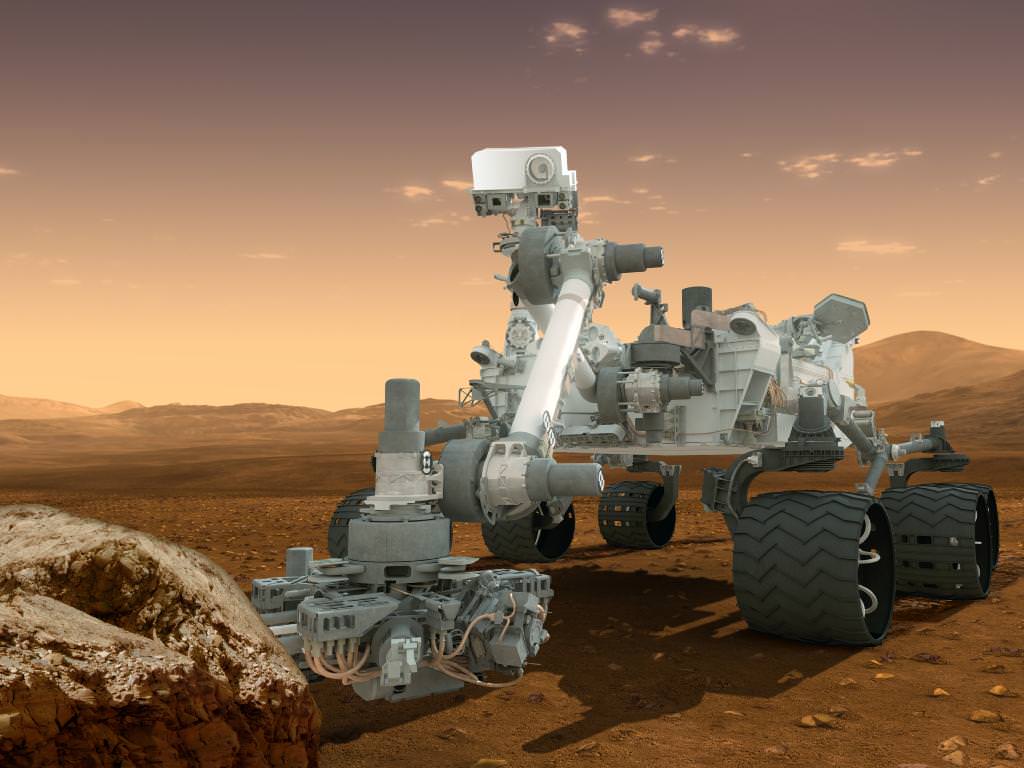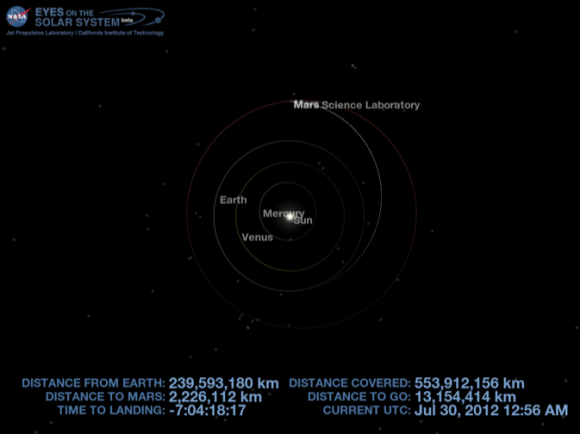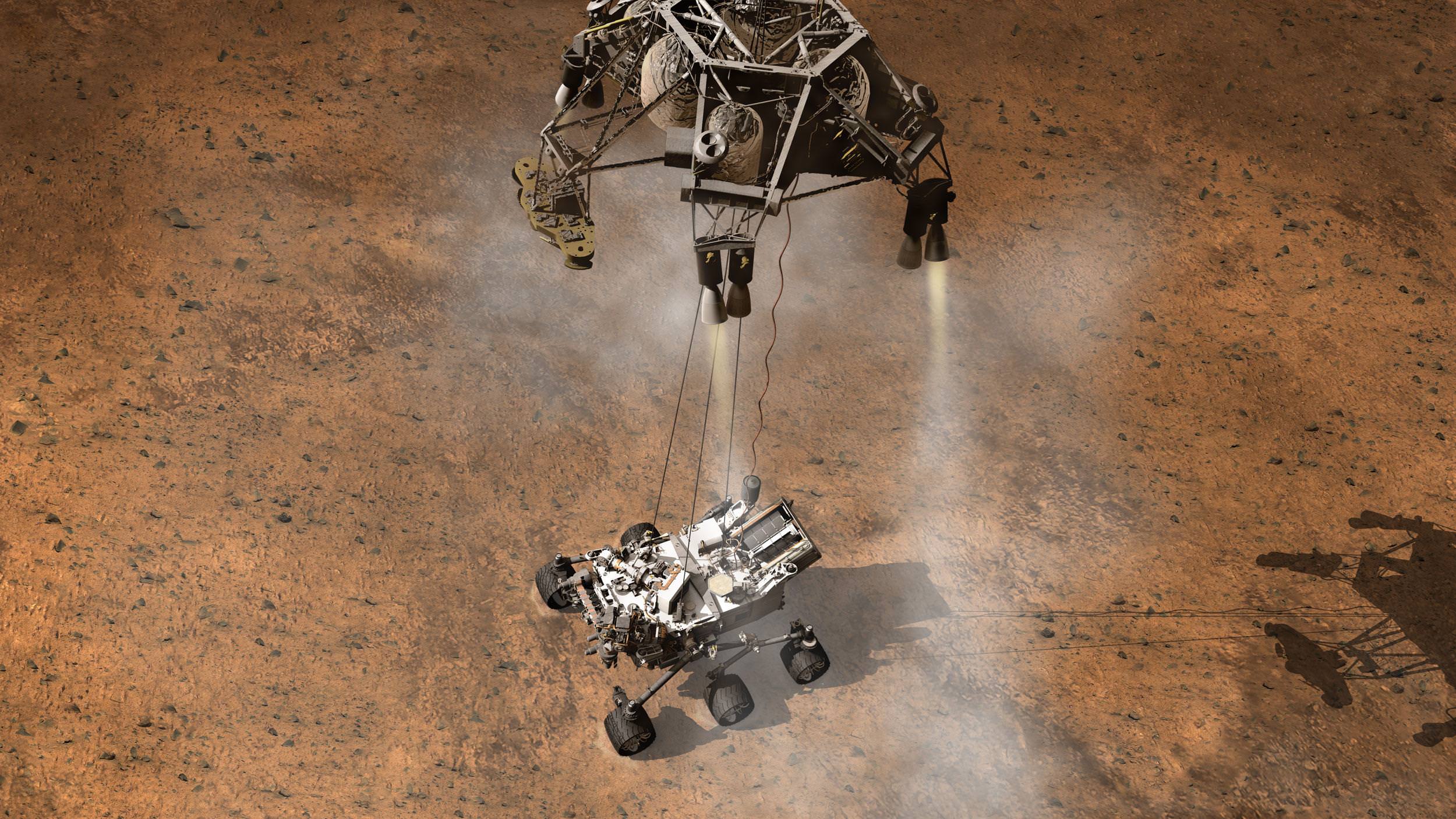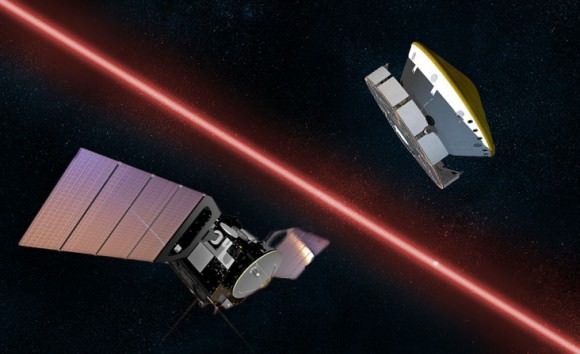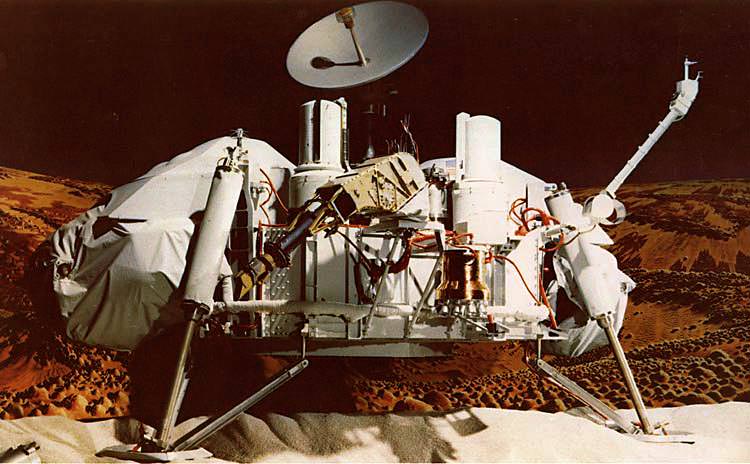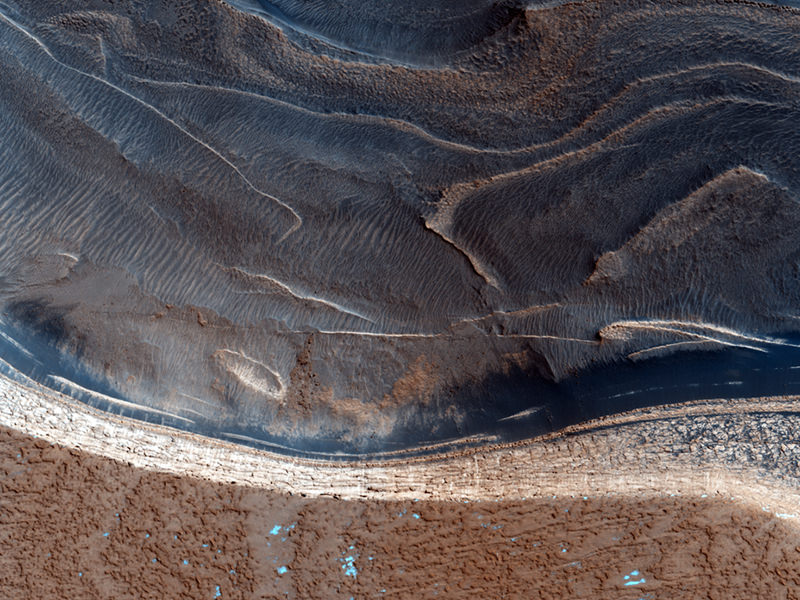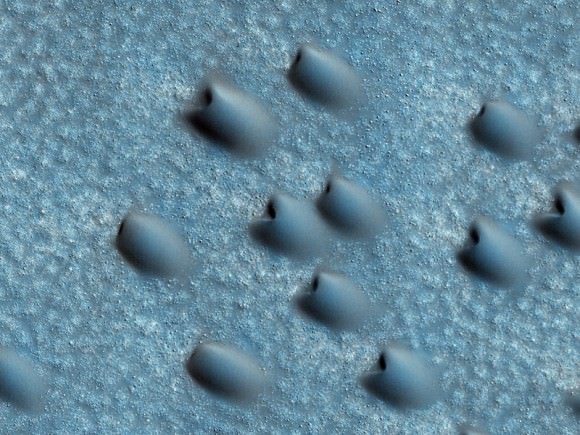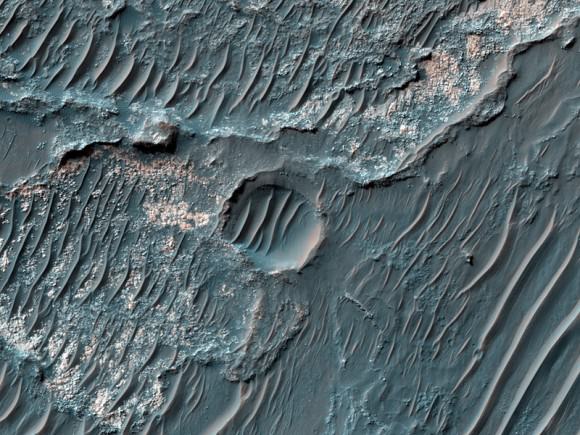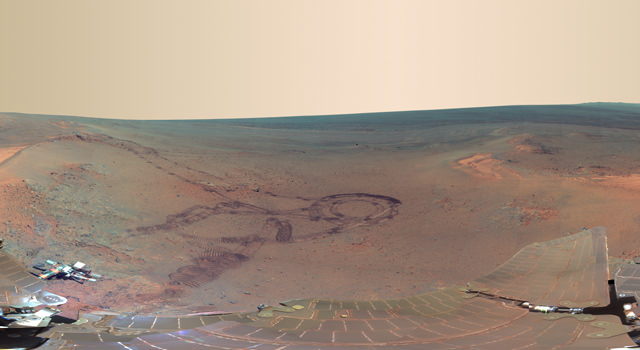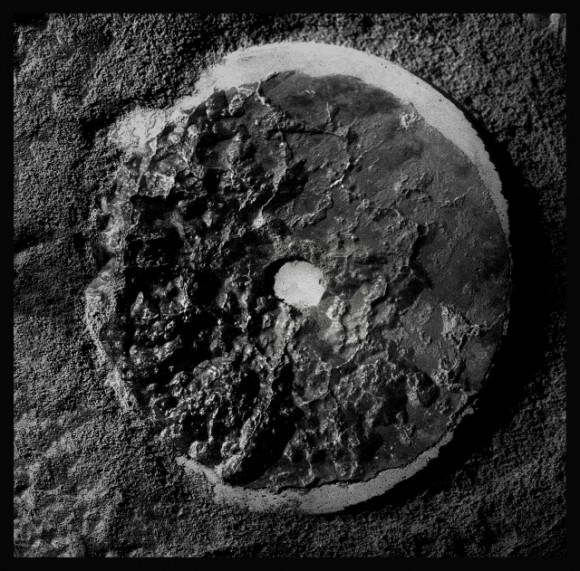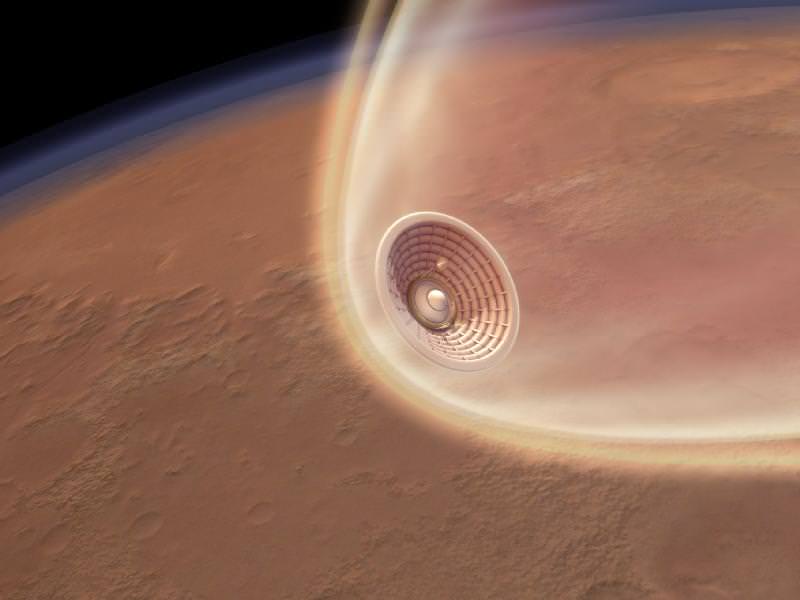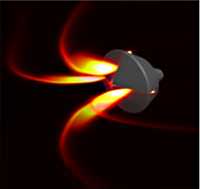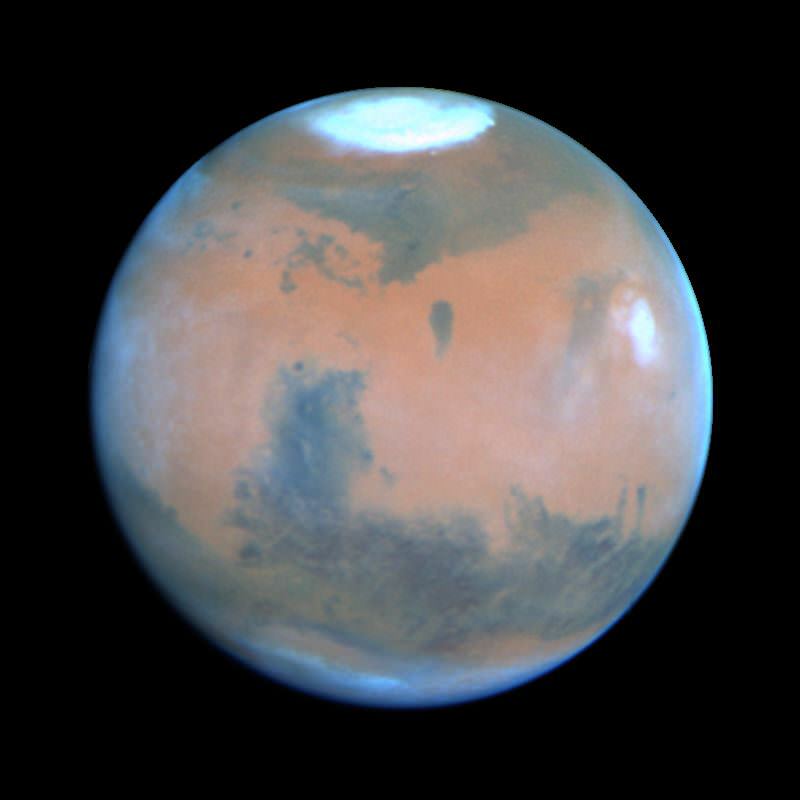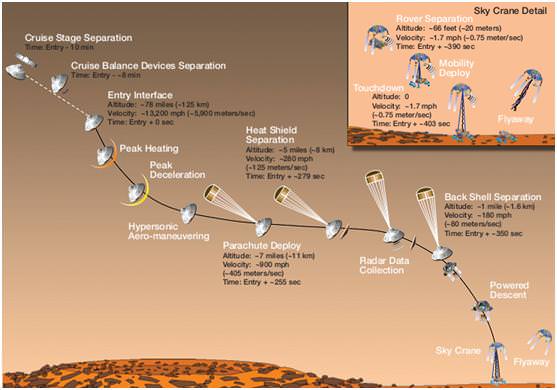Image Caption: Course correcting thruster firings on July 29 successfully placed Curiosity on target to touchdown beside Mount Sharp inside Gale Crater on Mars on Aug 6 in search of signs of a habitable environment. Credit: NASA
Now just 1 week out from landing beside a 3 mile high (5 km) layered Martian mountain in search of life’s ingredients, aiming thrusters aboard the cruise stage of NASA’s car sized Curiosity Mars Science Lab successfully fired to set the rover precisely on course for a touchdown on Mars at about 1:31 a.m. EDT (531 GMT) early on Aug. 6 (10:31 p.m. PDT on Aug. 5).
Two precise and brief thruster bursts lasting about 7 seconds were successfully carried out just hours ago earlier today at 1 a.m. on July 29, EDT (10 p.m. PDT on July 28). The effect was to change the spacecraft’s velocity by about 1/40 MPH or 1 cm/sec as it smashes into Mars at about 13,200 mph (5,900 meters per second).
This was the fourth and possibly last of 6 interplanetary Trajectory Correction Manuevers (TCM’s) planned by mission engineers to steer Curiosity since departing Earth for the Red Planet.
If necessary, 2 additional TCM’s could be implemented in the final 48 hours next Saturday and Sunday before Curiosity begins plunging into the Martian atmosphere late Sunday night on a do or die mission to land inside the 100 mile wide Gale Crater with a huge mountain in the middle. All 6 TCM maneuvers were preplanned long before the Nov 26, 2011 liftoff from Cape Canaveral, Florida.
Without this course correction firing, MSL would have hit a point at the top of the Martian atmosphere about 13 miles (21 kilometers) east of the target entry point. During the preprogrammed Entry, Descent and Landing (EDL) sequence the vehicle can steer itself in the upper atmosphere to correct for an error amounting to a few miles.
On landing day, MSL can steer enough during its flight through the upper atmosphere to correct for missing the target entry aim point by a few miles and still land on the intended patch of Mars real estate. The mission’s engineers and managers rated the projected 13-mile miss big enough to warrant a correction maneuver.
“The purpose of this maneuver is to move the point at which Curiosity enters the atmosphere by about 13 miles,” said Tomas Martin-Mur of NASA’s Jet Propulsion Laboratory, Pasadena, Calif., chief of the mission’s navigation team. “The first look at telemetry and tracking data afterwards indicates the maneuver succeeded as planned.”
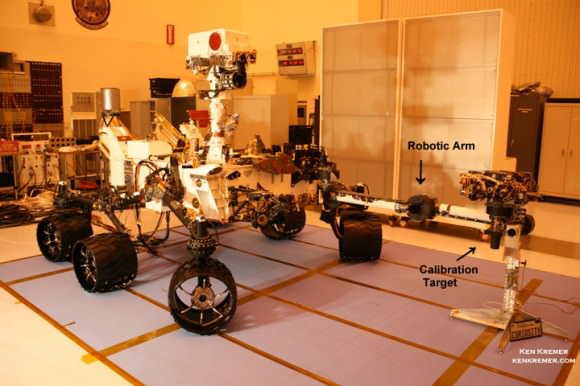
Image Cation: Curiosity Mars Science Laboratory Rover – inside the Cleanroom at KSC, with robotic arm extended prior to encapsulation and Nov. 26, 2011 liftoff. Credit: Ken Kremer/kenkremer.com
As of today (July 30), Curiosity has traveled about 97% of the overall journey to Mars or about 343 million miles (555 million kilometers) of its 352-million-mile (567-million-kilometer) total flight distance.
“I will not be surprised if this was our last trajectory correction maneuver,” Martin Mur said of the TCM-4 firing. “We will be monitoring the trajectory using the antennas of the Deep Space Network to be sure Curiosity is staying on the right path for a successful entry, descent and landing.”
Curiosity will use an unprecedented rocket powered descent stage and a helicopter like sky crane to set down astride the sedimentary layers of Mount Sharp.
She will then conduct a minimum 2 year prime mission with the most sophisticated science instrument package ever dispatched to Mars to determine if a habitable zone ever existed on this region of Mars.
Curiosity will search for the ingredients of life in the form of organic molecules – the carbon based molecules which are the building blocks of life as we know it. The one-ton behemoth is packed to the gills with 10 state of the art science instruments including a 7 foot long robotic arm, scoop, drill and laser rock zapper.
As Curiosity dives down to Mars surface on Aug. 6, 3 spacecraft from NASA and ESA are now positioned in orbit around the Red Planet and are ready to relay and record signals from the “7 Minutes of Terror” – Read the details in my article – here
Watch NASA TV online for live coverage of the Curiosity landing on Aug 5/6:
mars.jpl.nasa.gov or www.nasa.gov

